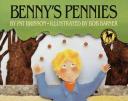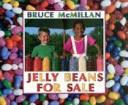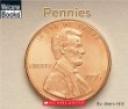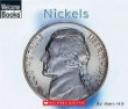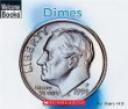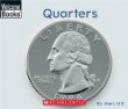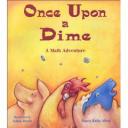This post focuses on teaching money to Kindergartners. The resources below will be useful for teaching young children to name and identify the value of pennies, nickels, dimes, and quarters and to count collections of coins up to 25 cents (in Virginia this relates to Kindergarten Math SOL K.7).
Recommended Books for Teaching Money to Kindergartners
Benny’s Pennies by Pat Brisson, illustrated by Bob Barner – The book Benny's Pennies by Pat Brisson tells the story of Benny McBride who has five new pennies that he decides to spend buying things for his family and pets. As he walks through his neighborhood, Benny spends one of his pennies on each of his family members and then he arrives home with five simple but splendid gifts – a rose for his mother, a cookie for his brother, a paper hat for his sister, a bone for his dog, and a floppy fish for his cat. This book is perfect for Kindergarten and is a great way to introduce a lesson about the penny.
Jelly Beans for Sale written and illustrated by Bruce McMillan – The book Jelly Beans for Sale by Bruce McMillan uses colorful jellybeans to illustrate the value of pennies, nickels, dimes, and quarters and how to count coins up to 25 cents. This book starts with the poem "One for a penny. Ten for a dime. Count them and buy them. You'll have a good time!" and then shows pictures of children using different combinations of coins to buy 1, 5, 10, or 25 jellybeans. Each page also includes a number sentence at the bottom of the page to explain how to count each set of coins. For example, one of the pages has a picture of 5 pennies, 1 nickel, and 10 jellybeans and then at the bottom of the page it says "1¢ + 1¢ + 1¢ + 1¢ + 1¢ + 5¢ = 10¢”. This book would be a fun way to introduce young children to the basic concepts of counting money.
Welcome Books: Money Matters series written and illustrated by Mary Hill – The nonfiction Welcome Books: Money Matters series by Mary Hill includes the books Pennies, Nickels, Dimes, and Quarters, which would all be great for introducing children to each coin. Some of the information in these books includes what coins are made of, which president is on each coin, the meaning of the symbols on the coins, the value of each coin, and how many of each coin it takes to make a dollar. This series is geared toward Kindergarten and 1st graders and would be useful as part of lessons about each individual coin.
Once Upon a Dime written by Nancy Allen and illustrated by Adam Doyle – In the book Once Upon a Dime by Nancy Allen, Farmer Worth notices a little tree growing on his farm where nothing had ever grown before and discovers that this special tree produces a new variety of crop – money. The tree produces different kinds of money, depending on what animal manure he uses to fertilize it. Students will enjoy listening to this story about farmer Truman Worth, his special tree, and a young boy's journey to learn the value of money.
Alexander, Who Used to Be Rich Last Sunday by Judith Viorst, illustrated by Ray Cruz – In Judith Viorst's book, Alexander, Who Used to Be Rich Last Sunday, Alexander's grandparents give him a dollar and he thinks he is rich. Little by little, however, the money disappears, as Alexander spends it on lots of small things, such as 15 cents for bubble gum, 15 cents for losing bets with his brother and his mom, and 12 cents to rent his friend's pet snake. By the end of the book, Alexander has spent all of his money and has only a few useless objects and some bus tokens. This would be a great story to read aloud and then have students practice counting pennies by using pennies to show how much money Alexander spent or lost in each part of the story.
Websites for Kindergarten Kids
- Money to Build a Robot – This game from the Kindergarten section of the Harcourt Math website focuses on identifying coins. In this game, kids will be asked to count the number of pennies, nickels, dimes, or quarters in a set of coins and type their answer in the box. For each correct answer, one part of a robot appears and after answering 4 questions, the kids will get to see the completed robot fly around the screen.
- Kindergarten Money Game – In this game, kids use coins to buy 9 different food items. They are given a simple direction at the bottom of the screen and then as students drag coins onto the correct food, the game counts the value of the coins for them. This game does not require much prior knowledge about coins and all students will need to be able to do in order to play is find the coins that match the pictures at the bottom of the screen. Playing this game will help kids learn both the names and value of the coins, as well as how to count pennies.
- Spending Spree Game – In this game, kids choose from two sets of coins to select the correct amount to buy each toy. Some of the questions might be a little hard for kindergartners, but many of the amounts are less than 20 cents or use a single coin. Once kids have learned the value of each coin, this game will be a great way to practice counting small sets of coins.
- Coin Sort Game – In this game, kids sort pennies, nickels, and dimes into the correct piggy banks. As each coin is placed on the piggy bank, the total value of the coins in that bank is shown below the bank. Playing this game will provide practice with identifying and distinguishing between these 3 coins and will also show kids how pennies are counted by 1s, nickels by 5s, and dimes by 10s.
- Penny and Dime Sort – In this activity, kids sort pennies and dimes into piggy banks labeled “1¢” and “10¢”. This will help kids distinguish between pennies and dimes, as well as identify the value of each of those coins.
Additional Resources (For Teachers)
- Money Song from TeacherTube – This is a great 1 1/2 minute song video for helping students to recognize each coin and it’s value.
- Money Printables from MakingLearningFun.com – This site includes lots of printables and math and literacy activities to go with the story Benny’s Pennies, as well as several other money related activities.
- Once Upon a Dime Readers’ Theater – This would be a great cross-curricular activity for students to do after reading the book Once Upon a Dime as a class. If used in Kindergarten, the teacher might want to read the narrator parts herself.
- Little Giraffes Math Centers about Money – This website includes several center activities related to money that would be good for kindergarten, as well as money songs and poems to teach students.
- “My Own Store” Money Activity – This is a fun activity where students each make their own store using magazine pictures and then use coins and/or coin stamps to show the money they would use to make purchases from each others’ stores.

